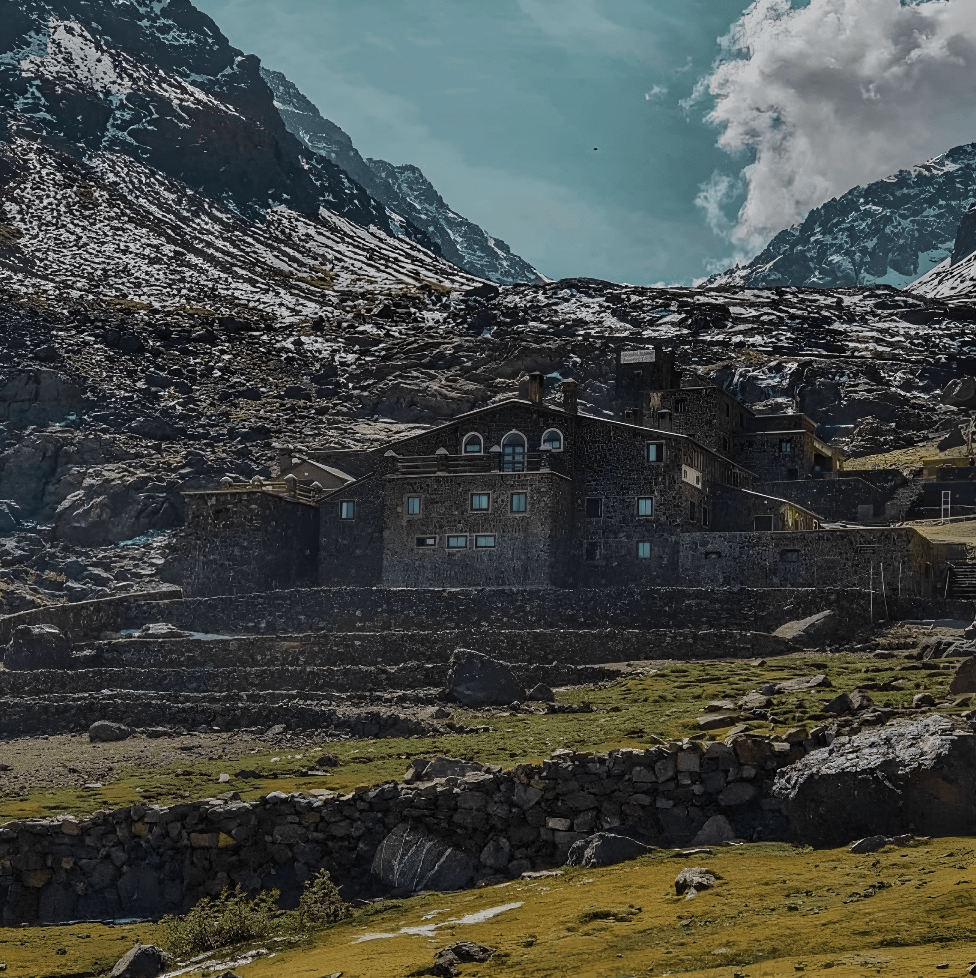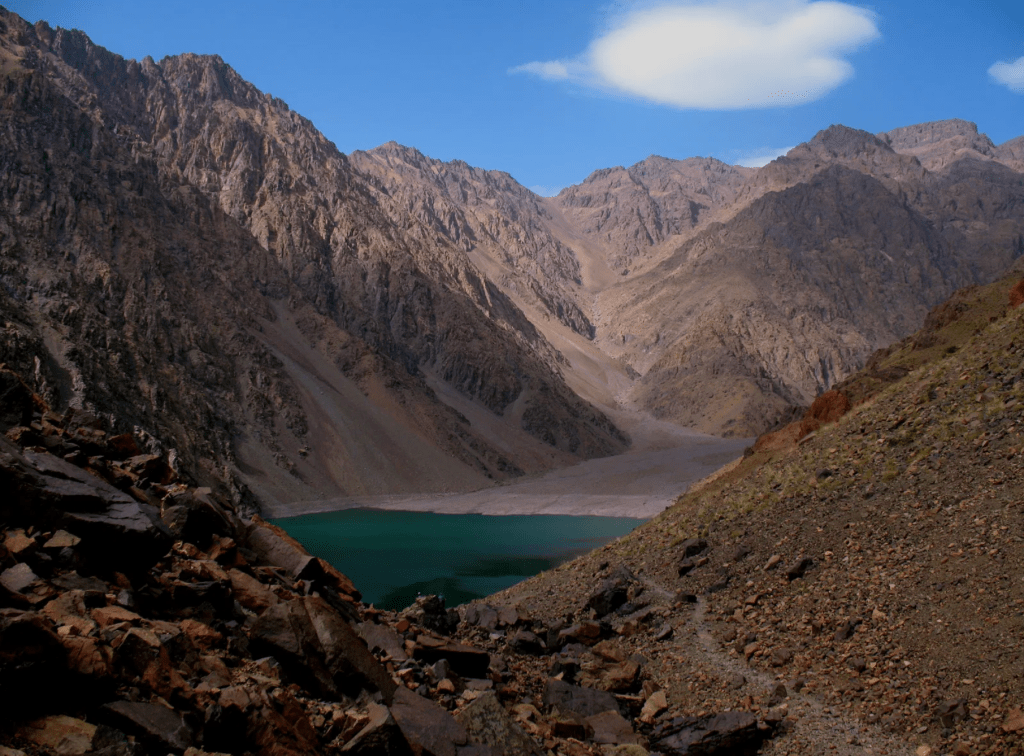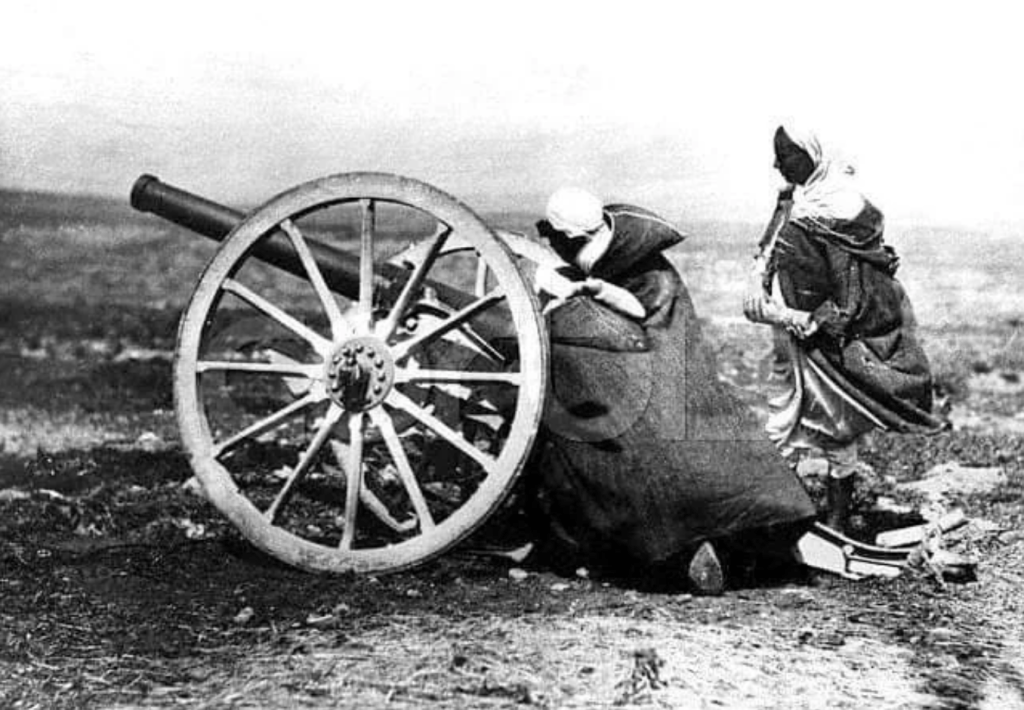Just before dawn, the ridgeline of Mount Toubkal looms on the horizon—ominous and silent, its peak still swallowed by night. Stories say that this place doesn’t just pierce the sky: it holds ancient secrets. Whispers speak of djinn, shrines half-buried in snowdrifts, and pilgrims who have journeyed up these slopes seeking healing in a world where myth still sleeps beside rocks.
A Name That Sees All
Toubkal—known in the Berber tongue as Tugg Akal, or “She Who Watches Over the Earth”—is more than a geological marker. At 4,167 meters, it stands sentinel over the High Atlas and casts a long shadow over Marrakech, almost 60 km away. In an age of GPS and satellite imagery, its presence still commands awe for the ancient reasons: prominence, beauty, and an otherworldly silence.

Spirits in the Stones
Halfway up the ascent, trekkers pass Sidi Chamharouch, a shrine marked by a white boulder that houses the tomb of a venerated marabout—the so-called “Sultan of the Jinns.” Pilgrims bring offerings, sacrifices, and prayers here for spiritual protection and healing. The atmosphere shifts—talk falls quiet; tea is sipped in reverence.
This place isn’t just mystical; it’s tangible, rooted in centuries of tradition. The shrine embodies a convergence of faith, folklore, and landscape in a way few other places can.

via Mediorient
Echoes of Early Climbers
The legend of Toubkal isn’t only local—it became part of colonial-era exploration narratives too. In June 1923, French explorers, including the Marquis de Segonzac, made the first recorded ascent, a grueling journey that ended triumphantly at the summit just days before the mountain’s elevation was officially confirmed via a trigonometrical marker in 1931.

via MutualArt
Scars of Stone and Ice
Beneath the myths and human stories lies another yawn of time: geology. The Toubkal massif is carved from volcanic and metamorphic rocks—andesite, rhyolite, and granites formed over 300 million years of tectonic upheavals. Its valleys were shaped by ancient glaciers that carved deep bowls and U-shaped hollows still visible today.
Even Lake Ifni, perched at around 2,500 meters, mirrors Toubkal’s northern face—a mysterious pool of green water that seems born of myth even if geology explains its depth and steep shores.

via Keadventure
From Earth to Sky—and Beyond
With each step upward, the trek transforms. From lush juniper forests and overgrazed slopes low down—described vividly in Britannica—to sparse, windblown ridges high above, the mountain reveals layers of both landscape and legend.
Toubkal was once a frontline of resistance, offering refuge to the Berber tribes opposing colonial rule. Now, the same trails are trodden by hikers chasing sunrise on the summit or descending into valley villages at dusk.

via Reddit
The Summit as Memory
Standing atop Mount Toubkal, breath shallow, horizon infinite—you’re not just looking down on Morocco; you’re bearing witness to time, myth, and identity. It is said that beyond the view lies the Sahara; in that view, you feel the convergence of natural power, spiritual history, and human resolve. As one Redditor put it:
“It is frequently climbed as it requires no technical mountaineering experience… the first recorded climb was by a team led by the Marquis de Segonzac”

via Kandoo
A Mountain That Hums
Mount Toubkal is a living storybook. It speaks in geology and legend, faith and modern footsteps, silence and sunrise. It invites you to climb—not only in altitude, but into the heart of a mountain that remembers empires, devils, and dreams alike.
WE ALSO SAID THIS: Don’t Miss… A Dive Into The MENA Region’s Scenic Lakes



